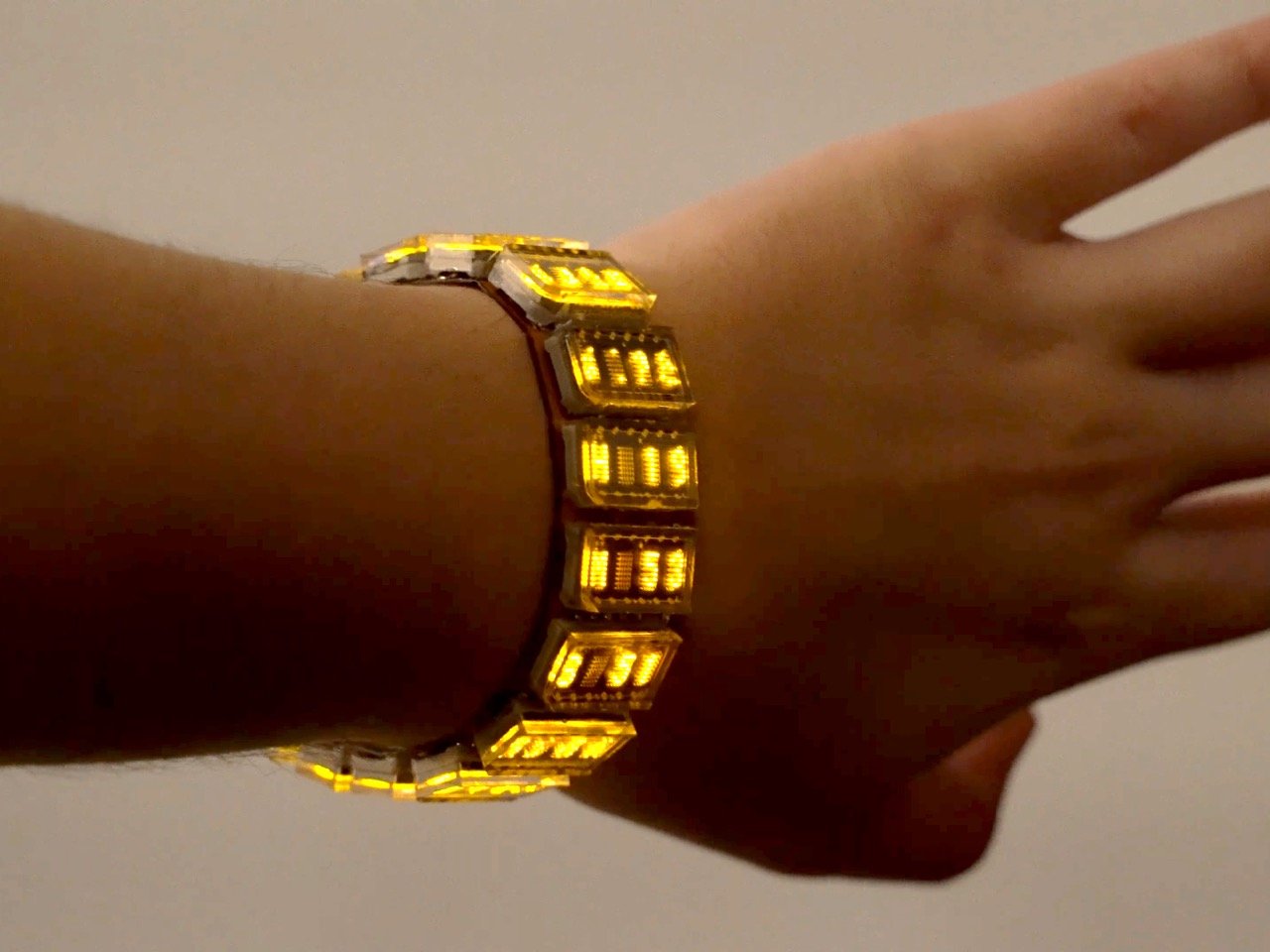If we’re talking about the future of wearable tech, we can’t ignore the underground world of DIY electronics. While companies like Apple and Samsung spend billions perfecting their latest smartwatch, a certain kind of creator is off in a garage somewhere, building something that is more than a gadget. It’s an artifact, a piece of kinetic art that you can strap to your wrist. That is exactly what one creator has done with a truly unique timepiece that looks like it was ripped straight out of a cyberpunk film. It’s a watch that eschews the typical single screen for a chain of displays that wraps around the wrist, capable of both showing the time and running some genuinely mesmerizing animations.
The aesthetics alone make this a showstopper. Imagine a device that comes to life with a “waterfall” of light or text that spins and cascades down the displays in a way that feels eerily reminiscent of the iconic code rain from The Matrix. This timepiece doesn’t just display data; it performs. The creator set out with a simple idea: build a watch with a series of displays that could flow into one another. It was a madcap vision, but it had to be brought to life quickly because the creator was on a tight deadline to get it ready for Open Sauce in San Francisco.
Designer: Sahko
The design process itself was a fascinating series of pivots and problem-solving. It began with the idea of a flexible circuit board (PCB) to hold everything together. This was a crucial choice because a rigid board would never conform to the wrist. The creator even used a strip of paper to measure his wrist to figure out the right length for the PCB, a classic move that shows the true nature of DIY. The biggest design decision was swapping the microcontroller from a power-hungry Raspberry Pi Pico to a more compact and efficient STM32U083KCU6. The Pico, while a fan favorite, was simply too large and needed too many external components for this wearable application. The STM32, on the other hand, was a perfect fit for a project where every millimeter and milliamp counts.
Of course, no project this ambitious goes off without a hitch. The creator encountered a maddening issue where the displays would randomly shut off. It turned out to be a power supply problem. When all the pixels turned on at once, it would cause a voltage spike that would reset the logic in some of the displays. It’s a classic electrical engineering puzzle, solved with a simple capacitor to stabilize the power line. The fix, while effective, had to be manually soldered on after the fact because the creator had forgotten to include the component in the initial design. This is the kind of stuff that happens when you’re working on a tight deadline, and it’s also why you should always double-check your schematics.
Then there was the little matter of the “stiffener layer,” another manufacturing detail that was initially overlooked. Stiffeners are those little plastic bits on flexible PCBs that give a section some rigidity, which is essential for mounting components. Without them, a component on a flexible part of the board can just snap off. The manufacturer sent an email flagging this issue, forcing a quick redesign and resend of the files. It was an essential lesson in the nuanced world of PCB fabrication. A similar pragmatic design choice was the charging solution. The creator wanted a USB-C connector but realized it would be too tight and risk ripping the PCB. A more sensible, if less elegant, solution was to use a simple pin header, which also conveniently allowed for programming the device with a repurposed USB cable.
The final build also had its share of quirks and creative hacks. The displays themselves were through-hole components, but the creator treated them like surface-mount parts by bending and trimming the pins. It’s a testament to the ingenuity of a hands-on maker to make a component work in a way it was not intended. Even the power source was a prime example of resourcefulness: a repurposed battery salvaged from a disposable vape. Arguably a better use of lithium ion cells I’m sure you’d agree…
While the final product looked incredible, it was, by the creator’s own admission, a fragile work of art. The watch broke and needed to be repaired at least ten times during the weekend at Open Sauce, primarily because the displays were not designed to withstand the physical stresses of a flexible watch. At $30 a pop, the displays alone cost $420 for the full set of 14, making this an incredibly expensive and unreliable timepiece. This is why the creator won’t be selling them as kits. However, in true community spirit, he has made the designs and code available online for anyone brave enough to attempt to build their own. You can grab the schematics here, and access the code here. And if anyone plans on building one out, please make a version in green just to satisfy my Matrix itch!
The post This Cyberpunk Watch with a Wraparound-display looks like a Matrix Accessory brought to life first appeared on Yanko Design.

